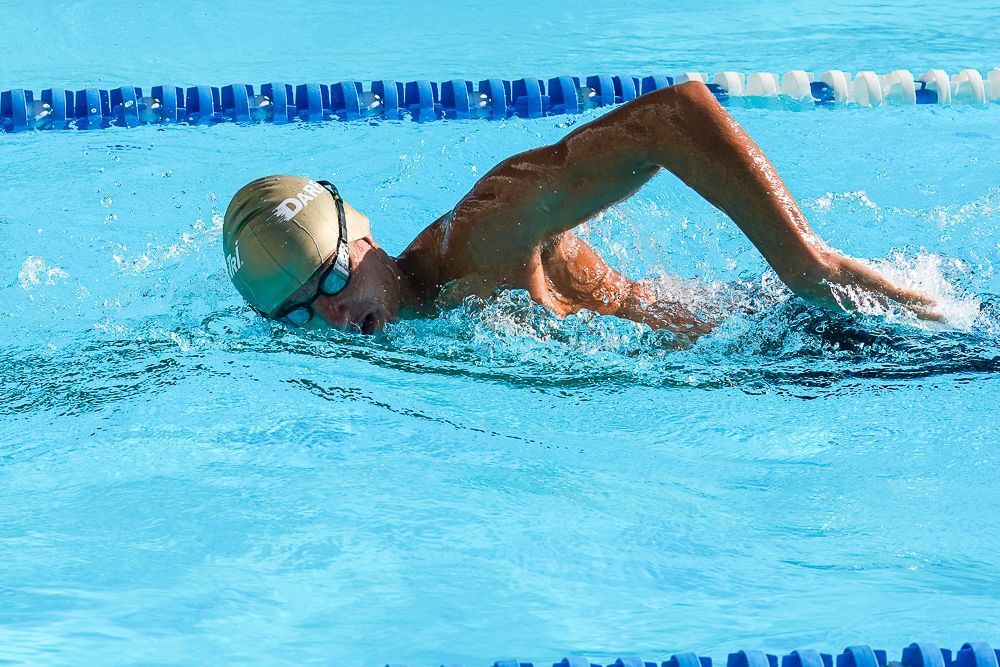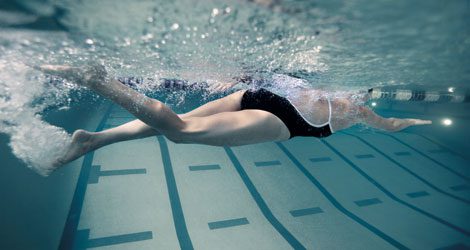Self-coach yourself to a swim PB this season
How to self-assess in the pool
 Photo by:
Kevin Mackinnon
Photo by:
Kevin Mackinnon
Swimming is by far the most technical of the sports in a triathlon. Changes in technique in the pool make a much bigger different to overall performance than in either running or cycling. For this reason, the number one recommendation I make to athletes who want to improve their swimming is to find a training group led by a competent coach who can provide them regular suggestions to improve their technique and feedback on how they are implementing those changes. However, this is just not possible for many people. Scheduling, travel distances, cost or a lack of a local team or competent coach can prevent it from happening.
So, what can you do? You might find a remote coach who analyzes a few videos of you swimming, providing some advice on what to work on. You might read some books or access some resources on the internet to give you tips on how to swim better. You might even just a get a swimmer friend to come over to watch you swim and give you some tips. All these can be useful, however, at the end of the day you will still be doing your swimming on your own. This makes it hard to know if you are progressing on a day-to-day basis.
There are a few easy variables that you can measure that can help you get some insights into this progress. The first of these is your average swim pace. This is typically measured as the amount of time that it takes you to swim 100 meters or yards but could vary if your pool is shorter or longer than a standard 25m/yds. If you are in a standard-sized pool, a good way to assess this would be to swim 10 x 100 m/yd repeats in a row, taking only 10 seconds of rest after each. Take the total time it took you to swim the set (including rest) and divide by 10. This will give you a rough estimate of the average speed you can hold for a 1000m/yd swim. If you see this getting faster, then you know that your swimming is getting better!

Unfortunately, average pace is a limited metric. It might get better because you are swimming more efficiently, because you are getting fitter, or because you tried harder (or had more energy) on a given day. Something else is needed. This something else is called strokes per length (SPL). Very simply put, this is simply the number of arm cycles it takes you to get from one end of the pool to the other. To get this number all you need to do is count the number of times your hand enters the water during one length. Swim 4 to 6 lengths at a steady, comfortable pace; counting this number each length. If you repeat this a few times, you will get your average SPL score. It may be slightly lower on the first and last lengths of an interval than on the lengths in the middle. This is normal and you should take note of the difference, giving you a “high” average SPL and a “low” average SPL. A lower overall score means you swim more efficiently. Now, what do you do with this information? The goal is emphatically not to get the lowest SPL possible. That can lead to all sorts of odd technique. The goal is to have an idea what your normal SPL is and then to track it over time. If it goes down as you make useful technical changes, that’s great. You are taking fewer strokes to travel the same distance and becoming more efficient.
If you combine SPL with your average swim pace, you can get a fuller picture of how your swimming is changing overall. For example, if your pace is the same, but your SPL has decreased (remember, lower SPL is better), you have become more efficient. This mean that whatever technical changes you have been making are having a beneficial effect on your swimming. If your pace is faster and your SPL stayed the same, it means you are likely fitter, as you can swim with the same efficiency while moving faster. This is also good. All this information will help you make the most out of your time swimming as you target your training to get you to your goals more quickly.
Darian Silk is a triathlon coach and Clinical Exercise Physiologist based in Toronto. Read more about Darian here or email him at darian@teamatomica.com. You can also check out his TrainingPeaks profile here.
